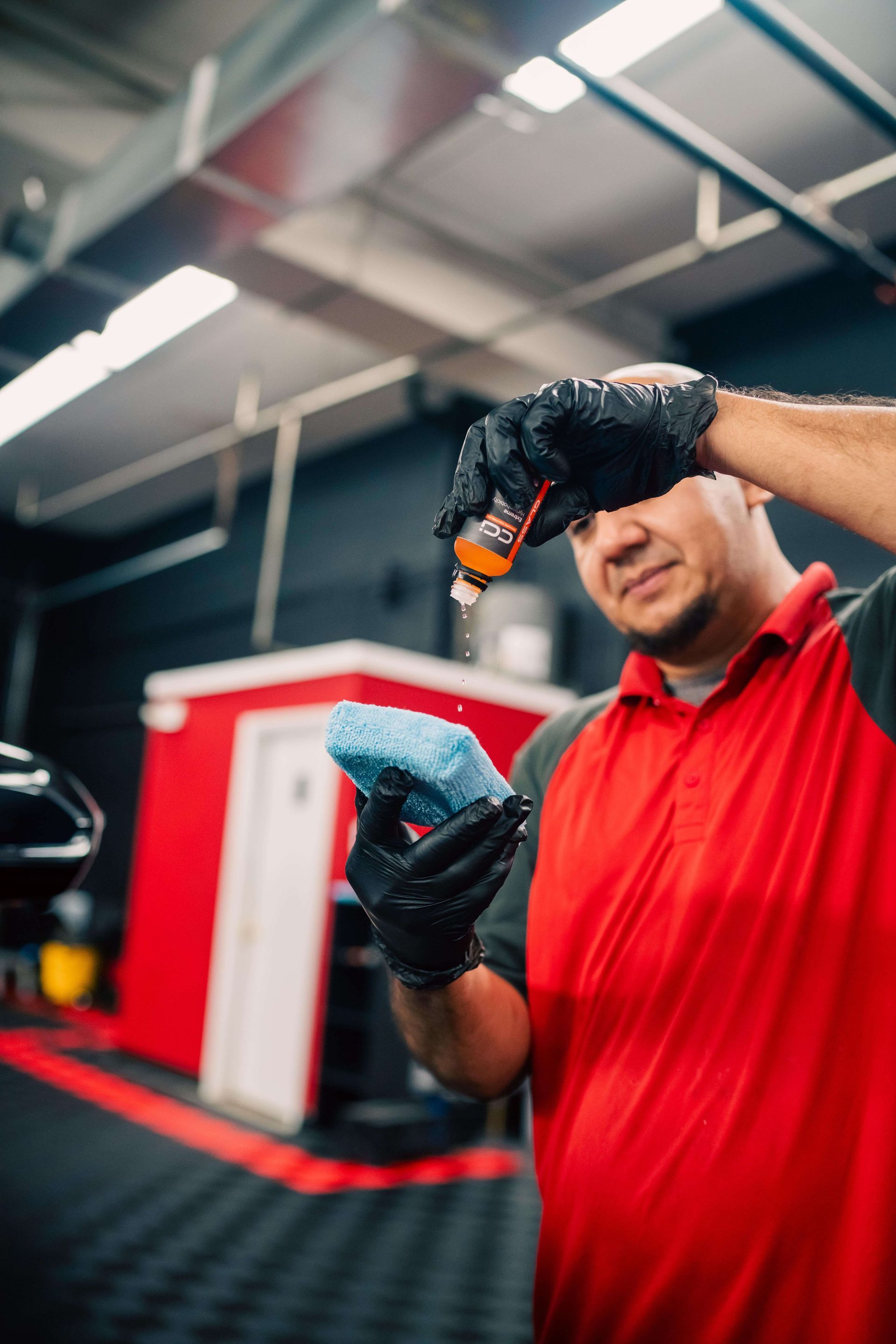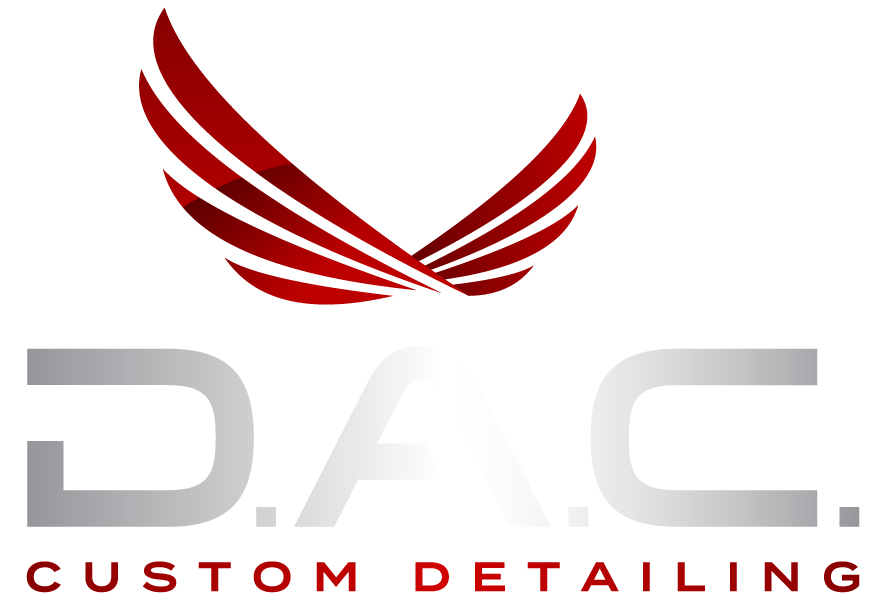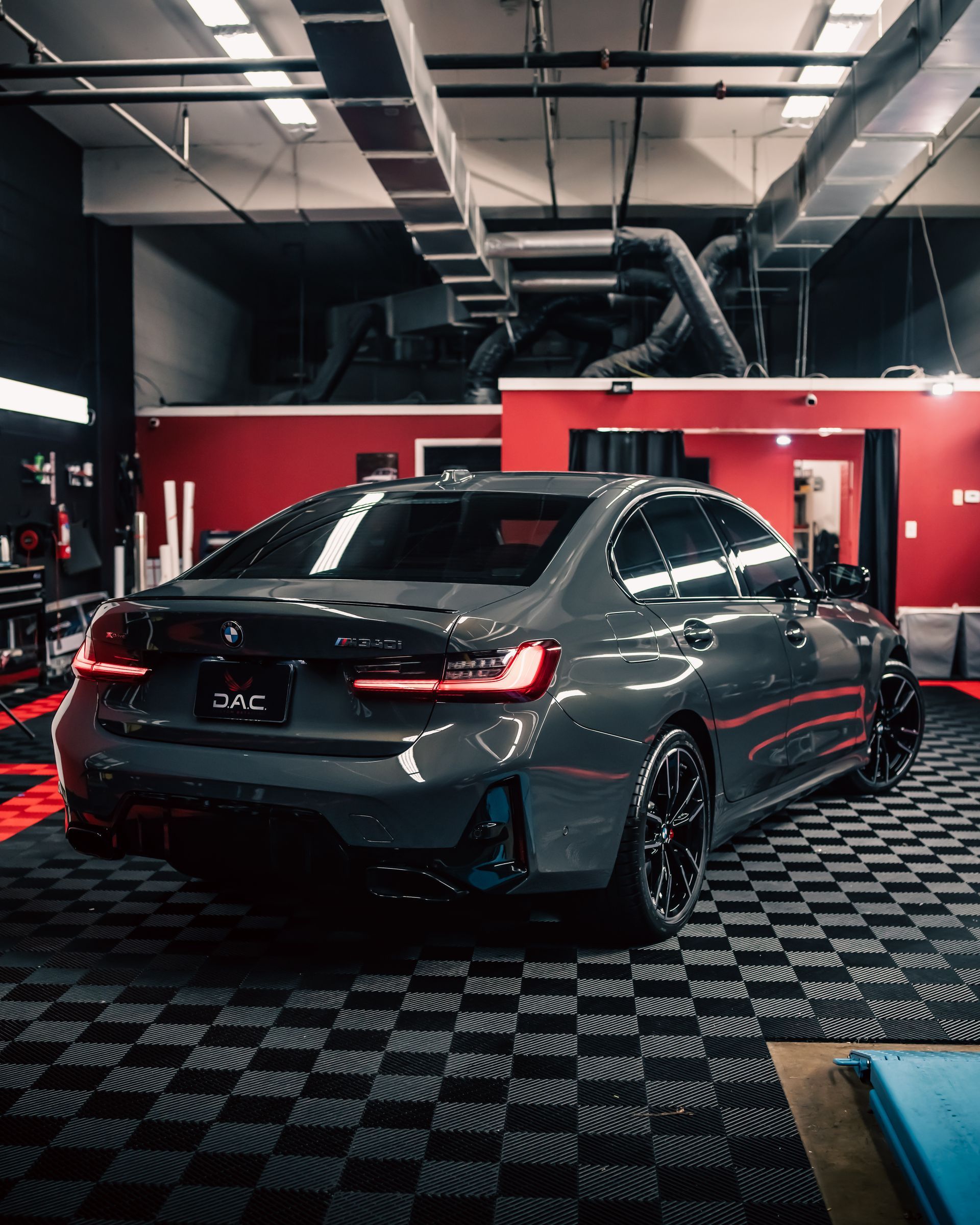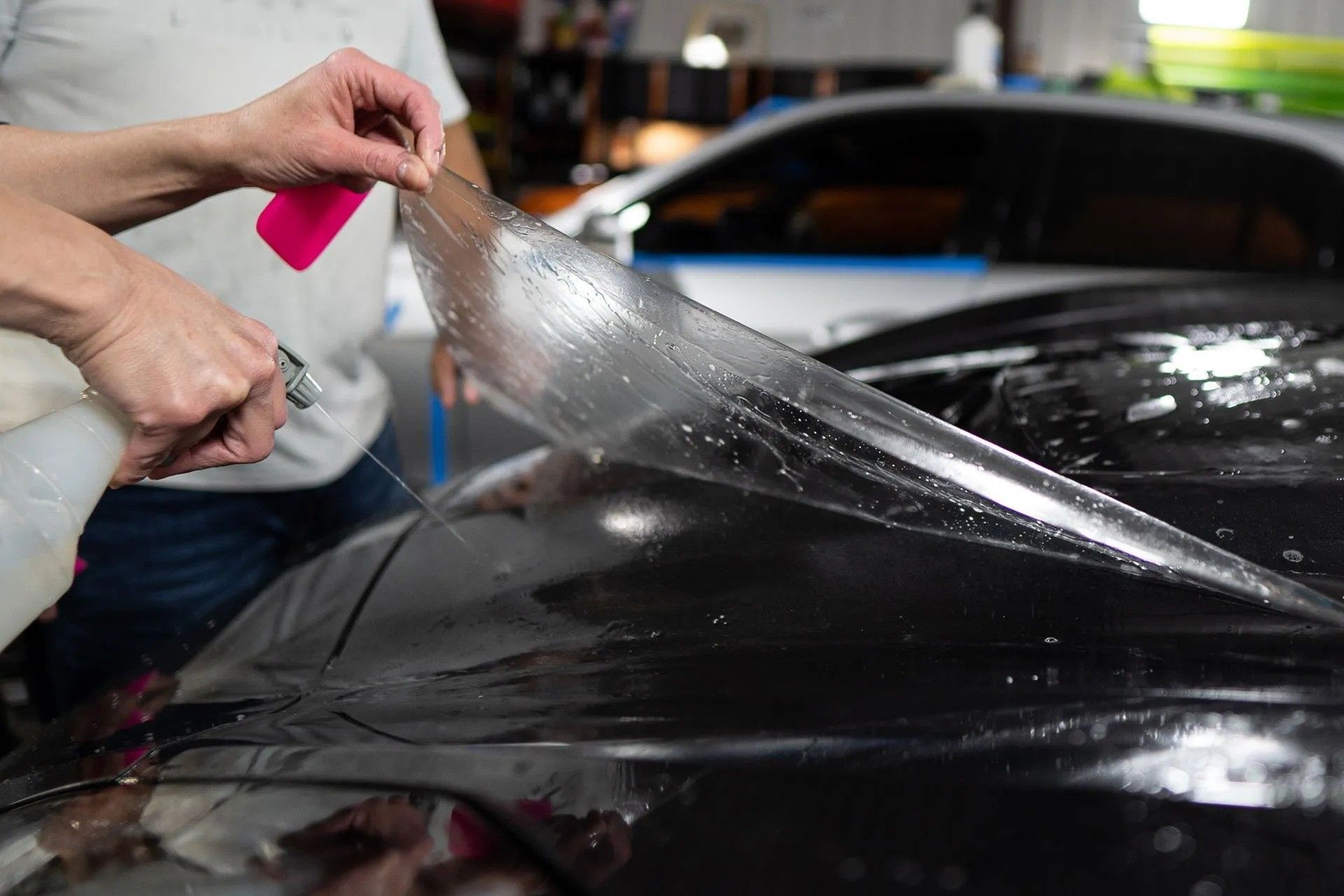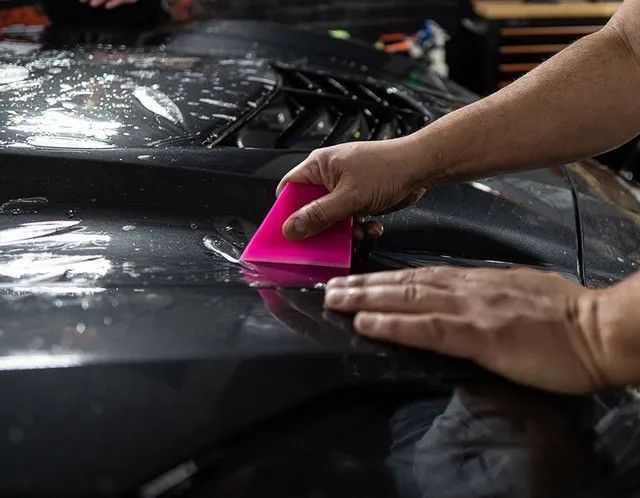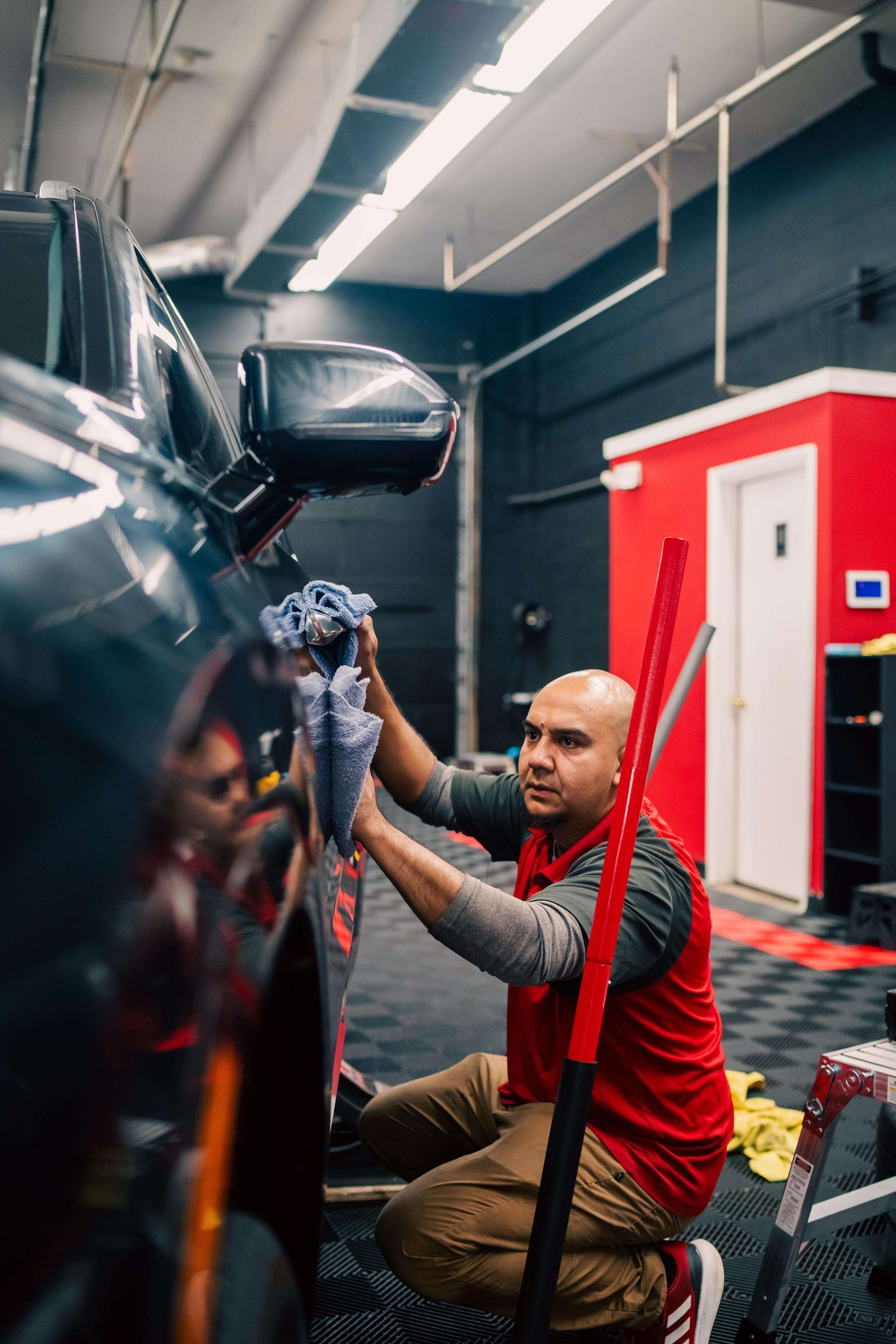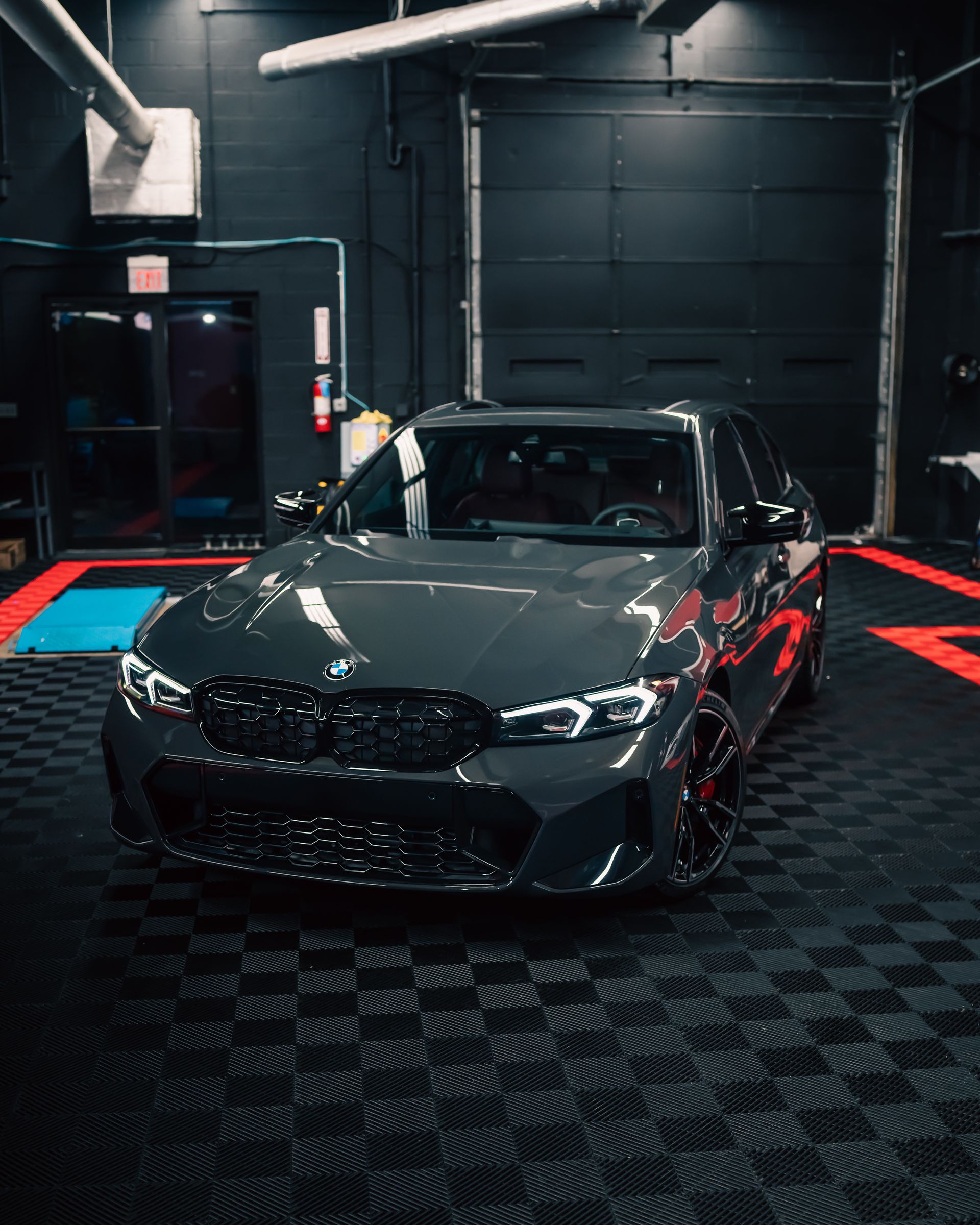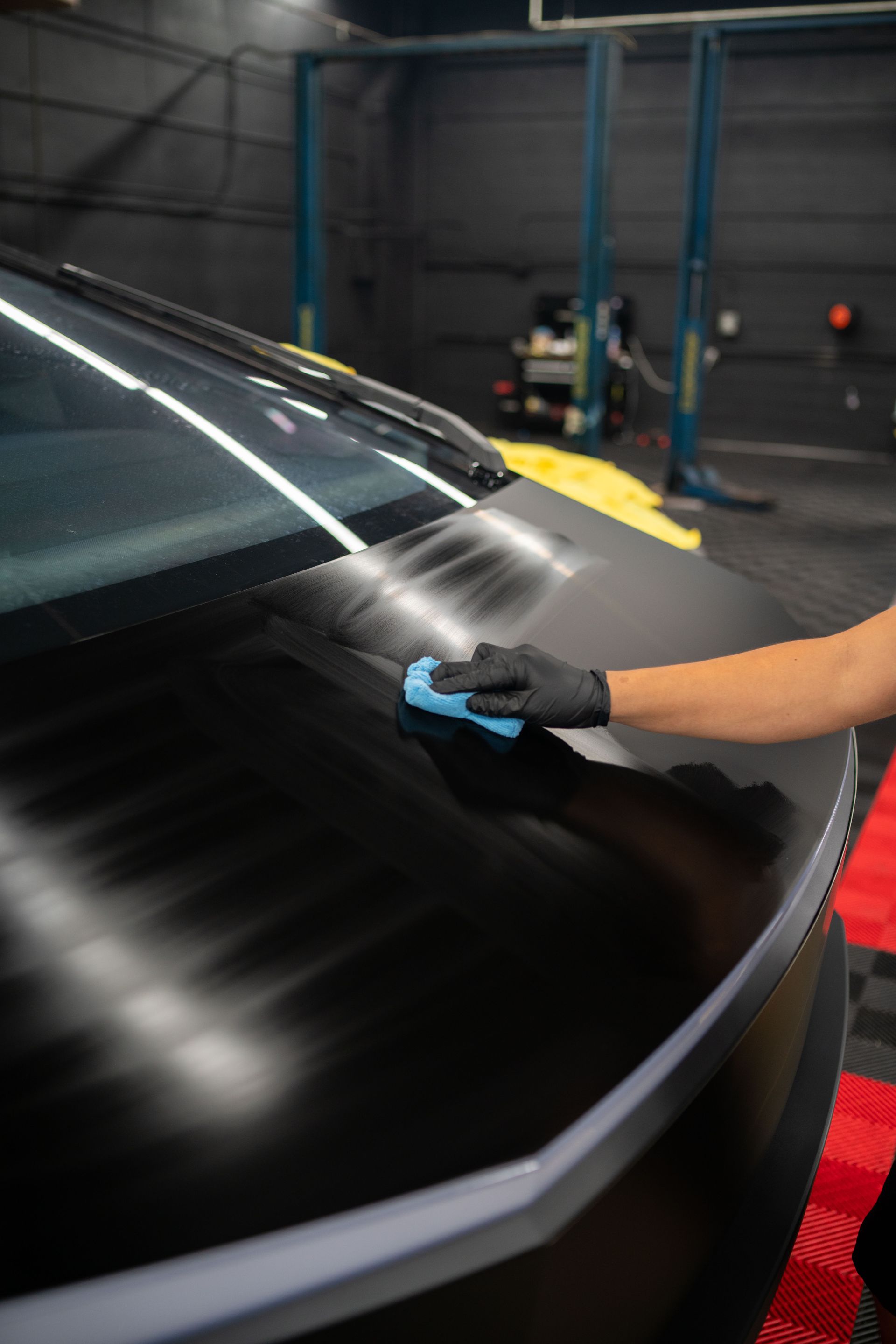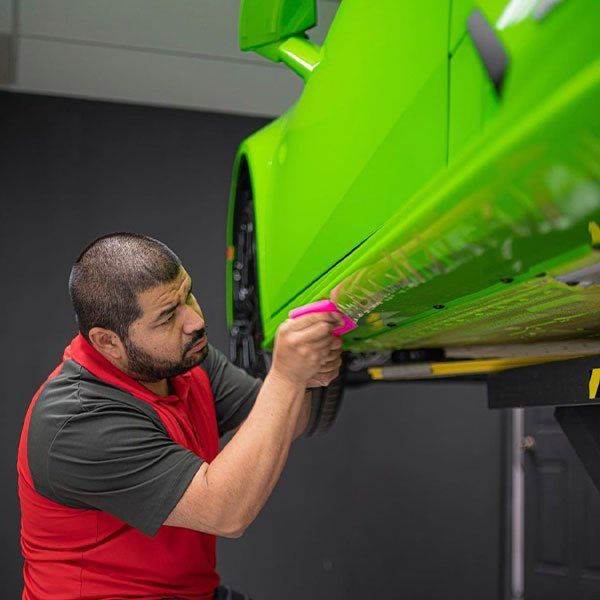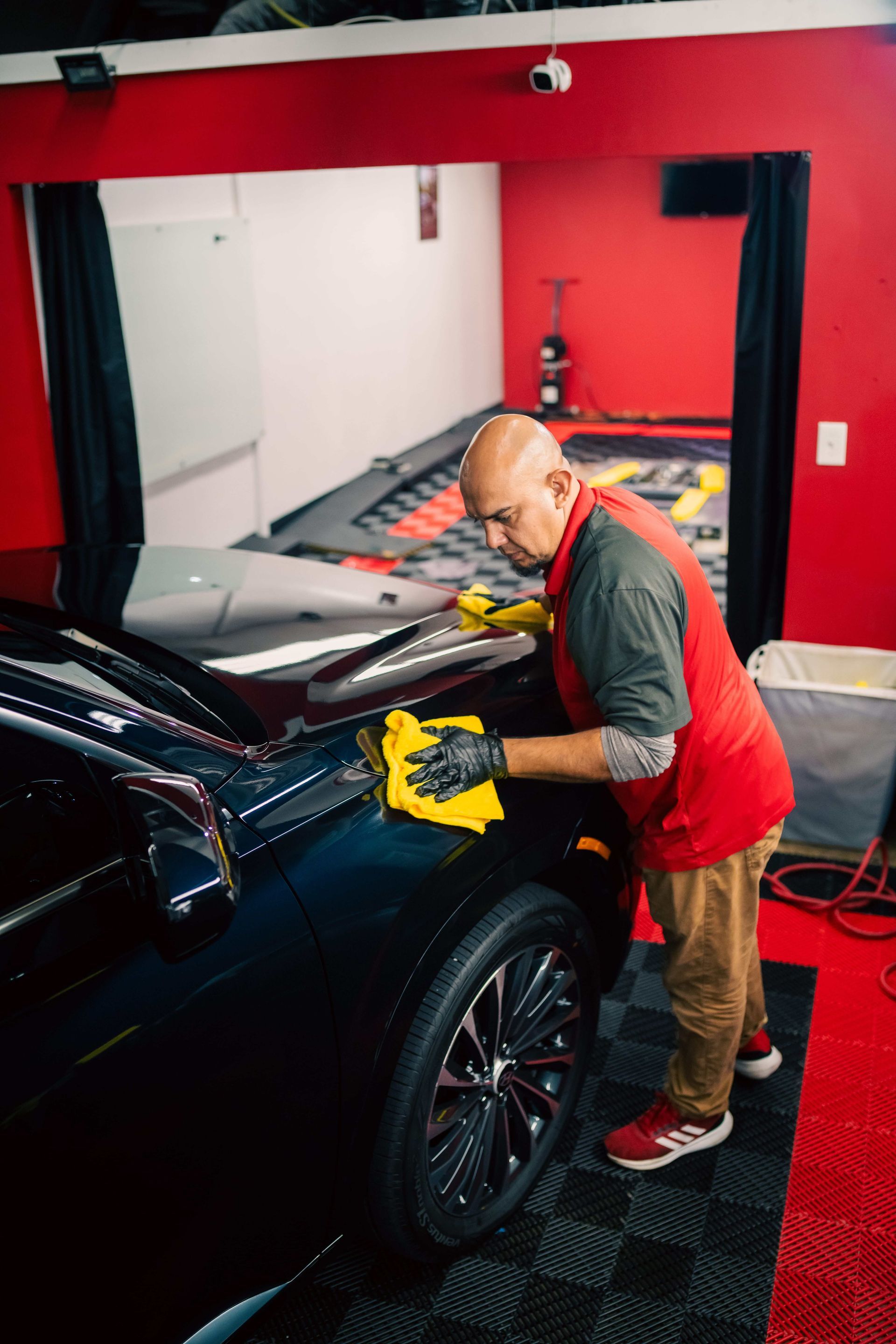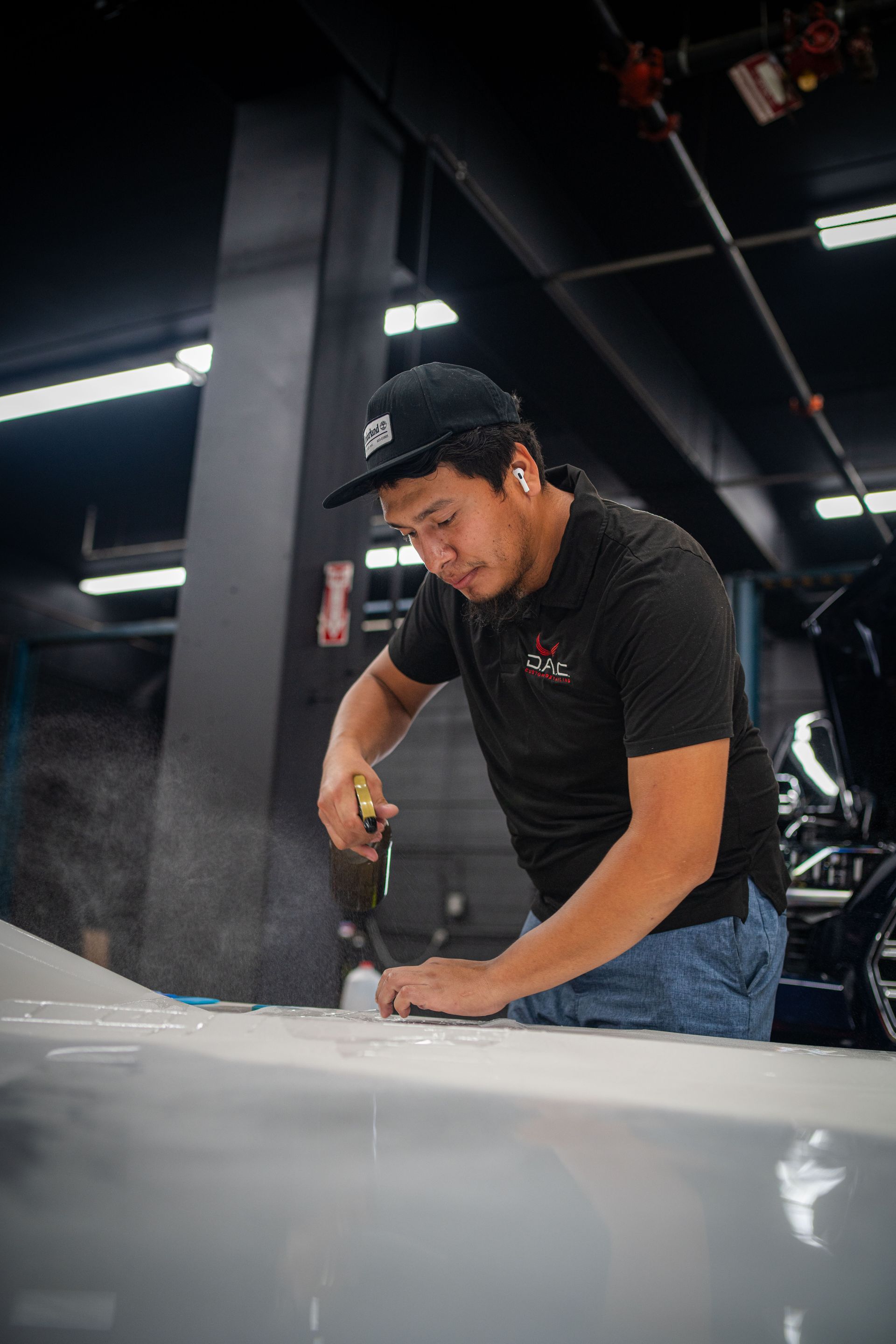REVIVE, PROTECT, MAINTAIN
In today’s automotive landscape, even minor scratches or chips can be frustrating for vehicle owners, underscoring the importance of effective paint protection. Paint protection film offers a modern solution—providing a durable, transparent layer that safeguards your vehicle’s finish from everyday wear while preserving its pristine appearance.
Modern paint protection film is engineered using a multi-layer composition that includes a self-healing clearcoat top layer, a resilient polyurethane core, and a specialized acrylic adhesive that ensures strong bonding without damaging the vehicle's paint. These advanced materials work together to absorb impacts and resist wear, enabling PPF to provide exceptional protection against chips, scratches, and environmental damage while maintaining its clarity and aesthetic appeal over time.
The Basics of Paint Protection Film
Paint protection film is a transparent layer designed for vehicles, serving as a formidable barrier against physical damage. Think of it as an invisible shield that adheres neatly to your car’s surface, protecting it from the challenges of the road and environment. The beauty of PPF lies not just in its protective characteristics but also in its advanced engineering that seamlessly integrates with your vehicle’s appearance while ensuring maximum performance. PPF was developed to withstand harsh conditions without deterioration. Over time, the technology has evolved, making it exceptionally suitable for consumer vehicles. This evolution means that a product once reserved for protecting military assets is now available to everyday drivers who want to maintain their car's pristine condition. One notable aspect of PPF is its multi-layered structure. It comprises several components that work together harmoniously to provide robust protection. The outermost layer features a self-healing clear coat that boasts UV inhibitors to prevent yellowing over time. Beneath this clear layer lies a polyurethane base, which serves as the core protective material against scratches and impacts. This combination absorbs the energy from minor impacts and allows the film to retain its integrity over time.
Another essential feature is the acrylic adhesive layer, which ensures that PPF bonds securely with the vehicle's paint without causing any damage when it's time for removal. Car owners can enjoy the protective benefits without compromising their vehicle's finish, a crucial concern for those with premium paint jobs. Lastly, the release liner protects this adhesive layer until application, enhancing cleanliness and efficiency during installation. Understanding this layered construction elucidates how PPF can ward off everyday wear while keeping vehicles looking sleek and polished.
Multi-Layer Shield Composition
At the heart of every effective PPF lies a carefully engineered multi-layer structure, designed to offer comprehensive protection while enhancing the aesthetic appeal of your vehicle. While each layer may seem straightforward individually, when combined, they form a robust barrier against the elements. The topcoat layer, for instance, is not just a shiny finish; it contains UV inhibitors that prevent the film from yellowing over time, keeping your car looking new longer. Additionally, this layer boasts impressive self-healing properties, meaning minor scratches and abrasions can disappear when exposed to heat. Underneath the topcoat lies the polyurethane layer, often regarded as the backbone of the PPF. This thick layer absorbs impacts—consider it to be a cushion that helps protect your vehicle's paint from chips and scratches caused by road debris or errant shopping carts in parking lots. Imagine driving through a rainstorm or harsh sunlight; this polyurethane layer guards against physical damage and has an inherent flexibility that allows it to adapt to changes in temperature and environment without cracking or peeling.
This adhesive is where intelligent engineering shines. Formulated specifically to be gentle on automotive paints, it creates a strong bond that keeps the film securely in place without causing damage upon removal. It's almost like having a trustworthy friend who supports you but knows when to let go. The bond strength ensures your film stays put during daily wear yet can be removed cleanly when necessary. This feature is especially important for those considering seasonal or temporary applications. The release liner plays a vital supporting role in protecting the adhesive during both storage and application. Without it, the adhesive may be tainted before being applied to your car. By maintaining cleanliness and integrity, this liner guarantees that once you’re ready to install your PPF, it adheres effectively and provides robust protection right from the start.
Self-Healing Top Layer
The self-healing layer of paint protection film is a marvel of modern engineering that provides an extraordinary advantage for maintaining the appearance of your vehicle. This remarkable top layer is crafted from thermoplastic polyurethane, a material known for its impressive elasticity and resilience. The science behind this layer allows it to literally "heal" itself from minor scratches and swirl marks, offering unparalleled protection for your vehicle’s paint without requiring cumbersome maintenance. The self-healing layer features a specialized chemical composition that interacts with heat to invoke a healing response. When a surface scratch occurs, the heat—whether from direct sunlight or warm water—activates the polymer molecules within the thermoplastic polyurethane. This process helps them realign and fill in the surface damage. Imagine coming back to your car after it's been exposed to the sun; as the external temperature rises, those unsightly blemishes can effectively disappear in front of your eyes. You may find yourself wondering if you truly just experienced magic.
Such innovative technology keeps your vehicle looking pristine and extends the lifespan of the film significantly. Most notably, this self-healing capability can extend up to 10 years under normal conditions, making it a savvy investment for any vehicle owner. Additionally, some formulations include UV resistance additives, which bolster these self-healing properties, ensuring they remain effective even under harsh conditions. At temperatures as low as 60°F (15°C), minor scratches can begin to heal themselves, demonstrating incredible functionality in various climates. While this top layer is robust and durable, an essential part of effective PPF use involves regular monitoring and care over time. It’s wise to periodically assess the condition of your film since leaving it in disrepair for prolonged periods can lead to brittleness that could inhibit its overall performance—this includes both scratch resistance and its self-healing abilities.
Impact and Scratch Resistance
The durability of PPF is fundamentally linked to its ability to handle impacts and resist scratches. This characteristic sets modern PPF apart from traditional coatings. The polyurethane layer serves as a high-performance barrier, effectively absorbing and dispersing energy from minor collisions, which significantly reduces the risk of damage to the underlying vehicle paint. Unlike other forms of protection that merely cover the surface, PPF works with the physics of impacts to safeguard what lies beneath. PPF can diminish the force experienced by the paint beneath by up to an impressive 70% in minor incidents. Imagine being involved in a small fender bender; the protective layer acts almost like an airbag, mitigating damage before it can even reach your paint job.
Alongside these remarkable impact-absorbing qualities, one must also consider how PPF manages scratches, ensuring your vehicle maintains its pristine appearance even after years of use. The scratch resistance of modern PPF is another important aspect that contributes to its long-term performance. High-quality films typically rate between 3H and 9H on the Mohs hardness scale—the higher the number, the better its resistance against scratching. So when you engage in day-to-day activities or park near overgrown foliage, you won’t have to worry excessively about small abrasions that would otherwise mar your paintwork. Interestingly enough, if a scratch does occur, many PPFs possess self-healing properties that allow them to recover from minor scratches merely through exposure to heat—whether it comes from sunlight or even a warm water rinse. This adds another layer of convenience for those who cherish their vehicles and want them looking their best with minimal effort. To quantify these benefits further, modern PPF can withstand impacts measured at up to 20 joules without sustaining significant damage, demonstrating its robust nature even under challenging conditions. This level of endurance makes it an ideal choice not merely for everyday vehicles but also for those subjected to extreme driving conditions like off-roading or racing.
UV and Weather Defense
Modern paint protection film excels not only in impact resistance but also in shielding vehicles from damaging ultraviolet (UV) rays and the relentless forces of nature. One often-overlooked aspect is how prolonged exposure to sunlight can make your car's glossy finish dull, eventually leading to fading and oxidation. Imagine a bright red sports car exposed to the blazing sun for days on end; over time, its radiant finish may lose its charm, transitioning from vibrant to lackluster. Thankfully, PPF is engineered specifically to combat this degradation, preserving the original color and luster. The advanced engineering behind PPF includes UV inhibitors within the clear top layer, which effectively mitigate UV damage. This impressive level of protection means your vehicle can look as pristine as the day it was purchased, even years after application. It's important to note here that once oxidation begins, reversing it can be costly and labor-intensive. So why not prevent it altogether? Investing in PPF is a necessity for maintaining your vehicle's aesthetics in regions where intense sunlight is a common occurrence.
However, UV defense isn't the only advantage PPF offers. The material is designed to withstand extreme weather conditions as well. PPF's durability is evident on both icy winter roads and sweltering summer days. These films can endure temperatures ranging from -40°F to 200°F without significant degradation, indicating their reliability under all sorts of environmental stressors. Such versatility makes investment in PPF particularly wise for those who experience fluctuating climates. Understanding this protective capacity highlights why many users find that their PPF continues to perform just as well after several years of use. It essentially acts as a shield against nature’s unpredictable elements—rain, snow, or harsh sun—while ensuring that paint remains intact beneath it. Those considering PPF should pay particular attention to brands that demonstrate durability against weather patterns.
Long-Term Performance Analysis
The discussion about PPF’s effectiveness centers on its ability to deliver long-term protection for your vehicle. Over time, vehicles with this protective layer tend to experience less paint degradation and surface damage. The benefits become increasingly evident with continued use, including:
- Retainment of Original Gloss and Color: Many owners often remark how their cars still shine as if they came straight from the showroom despite years of exposure.
- Minimal Maintenance Required: With PPF, routine upkeep becomes much simpler. Just a gentle wash is sufficient to maintain the film's integrity, making it a practical choice for busy individuals.
- Cost Savings on Repainting and Touch-Ups: Investing in PPF can lead to substantial savings on potential repainting or touch-up services, which can quickly add up without protective measures.
Understanding the engineering behind modern PPF further emphasizes its durability. It assures car owners that they are making a solid investment that pays off well into the future. By investing in modern PPF technology, car owners can ensure not only the preservation of their vehicles’ aesthetics but also the longevity of their appearance for years to come. The thoughtful engineering behind PPF represents an evolution in automotive care, making it an essential choice for protecting your investment.
Unmatched PPF Expertise in Alexandria, VA
Protect your vehicle’s finish with the precision and care it deserves. At D.A.C. Custom Detailing in Alexandria, VA, we specialize in
top-tier paint protection film (PPF) services designed to defend your car against rock chips, scratches, road debris, and harsh weather conditions. Our expert installers use only premium-grade films, ensuring a flawless fit that preserves your car’s original paint and glossy finish for years. Whether you drive a daily commuter or a prized luxury vehicle, our PPF solutions are tailored to keep your car looking its best through every mile. Trust D.A.C. Custom Detailing to provide long-lasting protection with unmatched attention to detail.
Schedule your appointment today and let your vehicle face the road with confidence!
Share with friends
